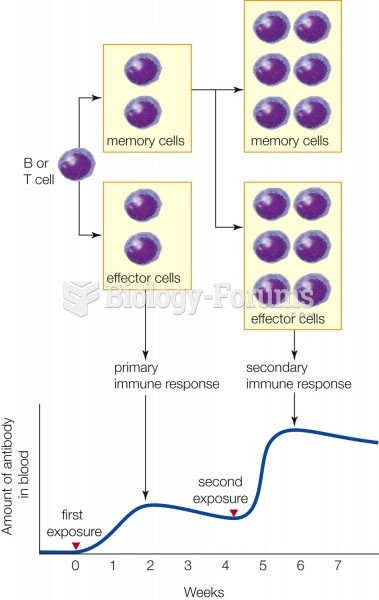|
|
|
Eat fiber! A diet high in fiber can help lower cholesterol levels by as much as 10%.
Egg cells are about the size of a grain of sand. They are formed inside of a female's ovaries before she is even born.
Looking at the sun may not only cause headache and distort your vision temporarily, but it can also cause permanent eye damage. Any exposure to sunlight adds to the cumulative effects of ultraviolet (UV) radiation on your eyes. UV exposure has been linked to eye disorders such as macular degeneration, solar retinitis, and corneal dystrophies.
About 100 new prescription or over-the-counter drugs come into the U.S. market every year.
People who have myopia, or nearsightedness, are not able to see objects at a distance but only up close. It occurs when the cornea is either curved too steeply, the eye is too long, or both. This condition is progressive and worsens with time. More than 100 million people in the United States are nearsighted, but only 20% of those are born with the condition. Diet, eye exercise, drug therapy, and corrective lenses can all help manage nearsightedness.
 Parents around the world teach their children their religious beliefs and practices. This photo is ...
Parents around the world teach their children their religious beliefs and practices. This photo is ...
 Cylinder 1 slit signals the computer the piston position for cylinder 1. The 1-degree slits provide ...
Cylinder 1 slit signals the computer the piston position for cylinder 1. The 1-degree slits provide ...





